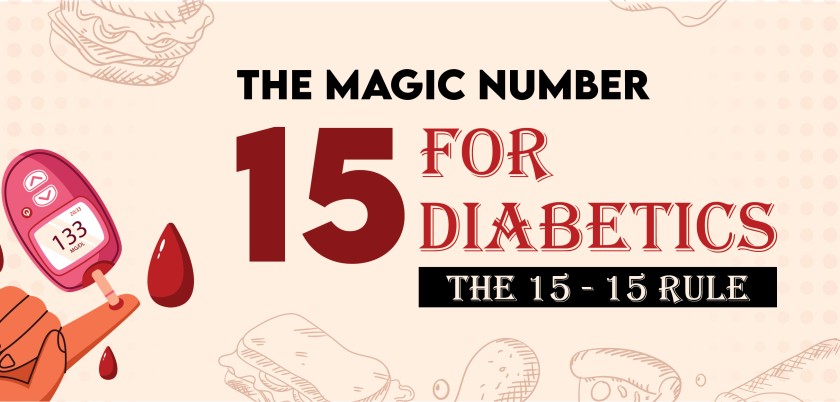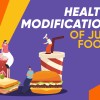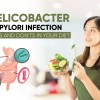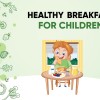
The magic number 15 for Diabetics - The 15-15 rule
Keeping the blood glucose levels under control is the main task left with an individual when diagnosed with diabetes and to do so, they have to regularly monitor their blood sugar levels through a glucometer and track the fluctuations in their glucose levels. Mostly people are concerned with high sugar levels but falling of sugar levels in the range of 55 - 69 mg/dL is a life-threatening condition called hypoglycaemia. Its a medical emergency and needs an immediate treatment. Probable reasons for this are performing excessive exercise, taking diabetic medication / insulin but skipping the meal or alcohol consumption.
The rule of 15-15 -
The best universal treatment for hypoglycaemia is the rule of 15-15. Whenever the blood sugar levels fall below 70 mg/dL, one should immediately have 15 grams of carbohydrates and wait for 15 minutes. After 15 minutes, use a glucometer to check the blood sugar levels. If they still don't reach the target range, have a 15 grams of carbohydrate serving again and wait again for 15 minutes to check the blood sugar value. Whenever your glucose levels reach the target range, have a nutritious snack to ensure that it doesn't get low again.
Sources of 15 grams of carbohydrates -
1. Glucose - Powdered glucose is made from dextrose / glucose. Glucose is milled into very fine powder so that it gets rapidly absorbed. Mix 15 grams of this powder in a glass of water to get glucose energy drink during a hypoglycaemic episode.
2. Sugar / honey - 1 tablespoon (15 g) of sugar or honey is a food source of carbohydrates, but it raises blood sugar slower than glucose. This is because both of these are a combination of glucose and fructose.
3. Glucose gel - Glucose gels come in a single-use tube with a twist-off top that requires you to squeeze the gel directly into the mouth. One gel offers 15 grams carbohydrates.
4. Glucose tablets - Glucose chewable tablets are made from glucose, that is directly absorbed into the blood stream. It is a quick source of raising blood sugar levels in hypoglycaemia. Most glucose tablets usually contain 4 grams carbohydrates. So it is advised to have 4 tablets when having a low episode.
5. Regular Juice - Consuming 1/2 cup of any juice with sugar such as orange juice, apple juice etc. helps in raising blood sugar levels, but a little slower than glucose as sucrose is made of glucose and fructose and body first begins to break it down.
6. Regular soda - 1/2 can of any regular soda also provides 15 grams table sugar to raise blood glucose levels.
7. Hard candies - You have to check the label for how many pieces will provide 15 grams carbohydrates. Usually it is on the consumption of 3 pieces of hard candies that 15 grams carbohydrates is obtained.
8. Jelly beans - Jelly beans are small bean shaped candies made with sugar.
Tips to keep in mind -
• This rule doesn't apply to infants or children with type 1 diabetes. American Diabetes Association (ADA) recommends infants to be given 6 g carbohydrates, toddlers be given 8 g carbohydrates and 10 grams of carbohydrates will suffice to small children.
• When the blood glucose levels falls below 55 mg/dL, one should rush to hospital and not try treating with this 15-15 rule as there are high chances of the patient of going into coma.
• If a person has fainted, never put anything in the mouth. You can just put honey on the inner lips with you finger tips because there are high chances of choking on eating food.
• Always try to have a source of simple refined carbohydrates, rather than having complex carbohydrates. Food that contains higher fat, protein or fibre will be digested slow and not raise the blood sugar quickly.
• One should always keep sugar candies, toffee foxes or glucose handy whenever going out.






